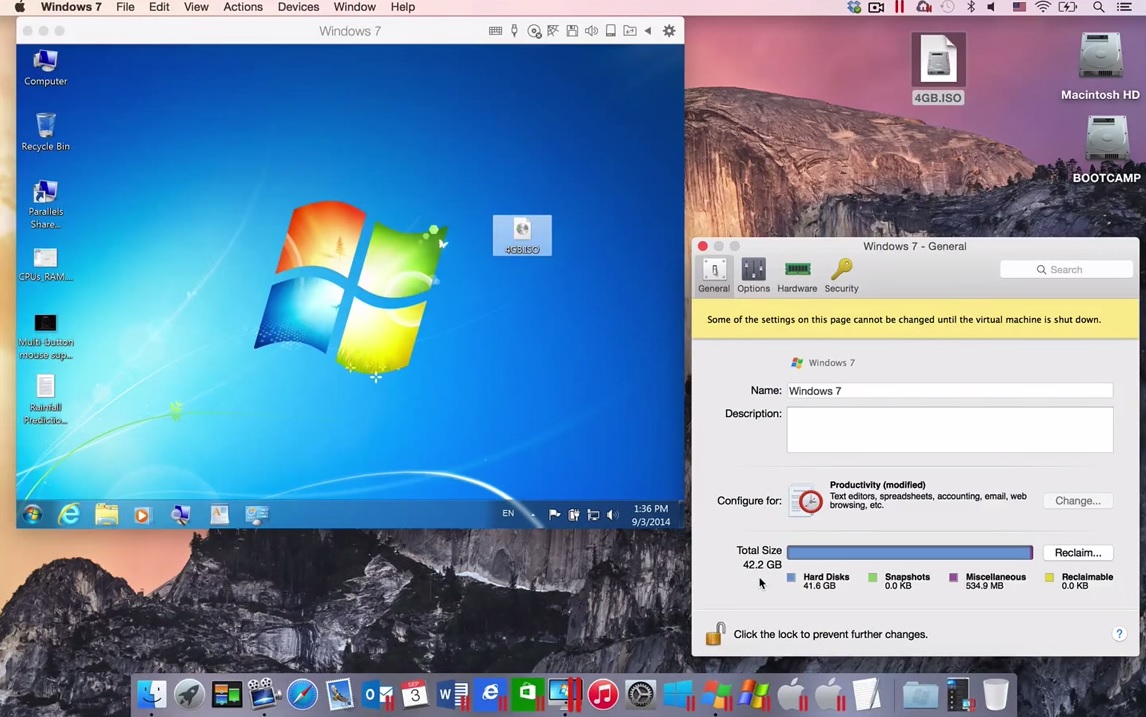Transitioning from a Windows PC to a Mac can be challenging, especially if you use applications or workflows that are dependent on Windows. Sometimes equivalent software isn't available — and even if it is, files aren't fully compatible with those Mac versions — and sometimes employer IT departments are reluctant to support the Mac.
- Vmware Offering Free Upgrade To Fusion From Parallels Desktop Free
- Vmware Offering Free Upgrade To Fusion From Parallels Desktop Download
If that's the case for you, installing Windows 10 on your Mac could be your best solution. There are two prominent commercial packages to help you with that: VMWare Fusion and Parallels Desktop. Parallels Desktop 10 and VMWare Fusion 7 are virtualization software: They're different from Boot Camp, Apple's method for running Windows on the Mac, because they're virtual machine environments. Using Parallels Desktop or VMWare Fusion, you can run Windows and Windows apps at the same time as OS X, rather than having to reboot into Windows, as you do with Boot Camp.


First of all, let me say that I think either Parallels Desktop or VMWare Fusion are excellent choices for virtualizing Windows. What's more, both vendors make trial versions available for download, so I heartily encourage anyone interested in giving them a try to do so. You have nothing to lose. Bear in mind that you will need a valid Windows 10 license to install any instance of Windows on your Mac; same goes for any Windows apps you want to use.
So this isn't an end-run around the cost of getting Windows or Windows software. If your budget is tight, there's another option too — virtualBox, from Oracle. Frankly it's not nearly as polished or optimized for speed as either Parallels Desktop or VMWare Fusion, but free is good, and it's good enough to get by in a pinch. Both Parallels Desktop and VMWare Fusion make it very easy for you to set up a new virtual machine and configure it to run Windows and Windows apps optimally. Both offer advanced integration with the Mac environment. That makes it easy to open apps and documents and launch Windows without creating a lot of disruption (or even a lot of open extra windows) on your Mac. So in many ways, Parallels Desktop and VMWare Fusion play an arm-wrestling game with each other.
They're always battling for dominance in the Mac virtualization software market. Having said that, I've found that Parallels Desktop 10 works faster on my Mac (a 2013 15-inch Retina MacBook Pro) than VMWare Fusion 7 does. Boot times are less and 3D graphics run faster. 3D graphics run more slowly than Boot Camp due to virtualization — after all, when your Mac is booted into a Windows Boot Camp partition, it is, for all intents and purposes, a Windows PC. Parallels also offers remote access service called Access (it's subscription-based and optional), which makes it easy to access your virtual machine from anywhere. The downside is that if you're on a laptop battery, Parallels can drain it pretty quickly.
But, if you need a great virtualization option, it's my current pick.

Attention, Internet Explorer User Announcement: VMware Communities has discontinued support for Internet Explorer 7 and below. In order to provide the best platform for continued innovation, VMware Communities no longer supports Internet Explorer 7.
Vmware Offering Free Upgrade To Fusion From Parallels Desktop Free
VMware Communities will not function with this version of Internet Explorer. Please consider upgrading to Internet Explorer 8, 9, or 10, or trying another browser such as Firefox, Safari, or Google Chrome.
Vmware Offering Free Upgrade To Fusion From Parallels Desktop Download
(Please remember to honor your company's IT policies before installing new software!).
